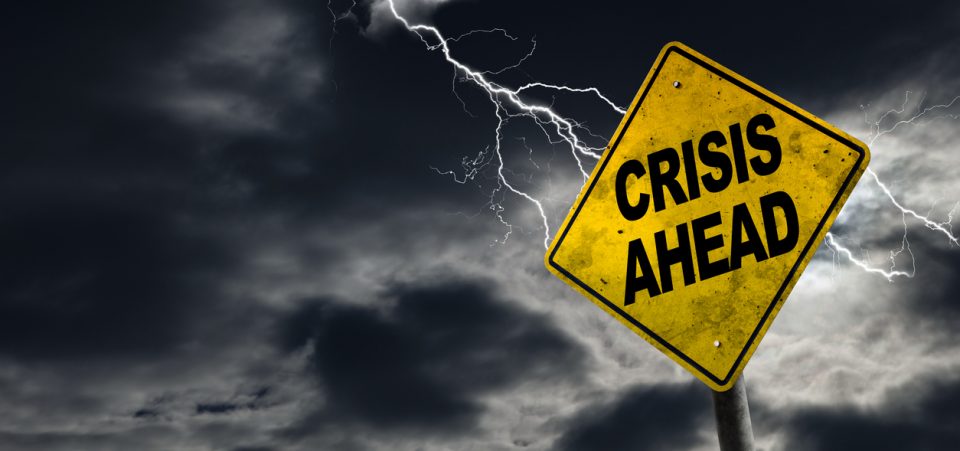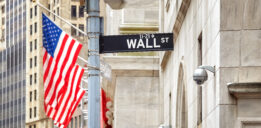Another Financial Crisis Is Possible. In Fact, It’s Probable
It was just about 10 years ago that a wildly overleveraged bank cracked. The bank was The Bear Stearns Companies, Inc. and its collapse marked the start of the 2008 financial crisis, which would then spawn the Great Recession.
Bear Stearns had drunk a little too much from the sub-prime “Kool-Aid,” stuffing mortgages into securities—derivatives of some sort—and doubling down on the loans needed to sustain daily operations.
Bear Stearns was thinking very short-term. It did not have the capital to plan for next week, let alone next year. You would think that banks and institutions have now learned a thing or two about taking too many risks. You’d be wrong; the financial crisis could resume any moment. (Source: “10 years after the fall of Bear Stearns, D.C. is poised to cause another financial crisis,” Los Angeles Times, March 19, 2018.)
A False Sense of Safety Precedes Financial Collapse
While regulations can encourage a false sense of safety (that risks are under control and channeled in secure financial assets), they cannot contain greed indefinitely.
The problem is that the big banks—and not just the American ones—remain massively overleveraged in derivatives. This is no tabloid exaggeration; a Boston research firm, Aite Group, LLC, noticed that, at the end of 2017, the largest American banks “owned” some $157.0 trillion worth of derivatives.
That’s over 10% more than they owned when Bear Stearns’s foundations started to collapse, triggering the 2008 financial crisis. Citigroup Inc (NYSE:C) tops the scales. It has some $44.0 trillion in derivatives exposure on the books. That’s 50% more than in 2008. (Source: “US bank derivatives books larger since rescue of Bear Stearns,” Financial Times, March 16, 2016.)
Banks Have Forgotten the Damage They Caused
Although the so-called Facebook Inc (NASDAQ:FB)/Cambridge Analytica “scandal,” involving phenomena that people are suddenly caring about (even as they willingly shared some of the most intimate aspects about themselves online), is the main news story these days, banks’ derivatives portfolios warrant more concern.
The facts should make you downright uncomfortable. The banks, perhaps encouraged by the winner-takes-all and anything-goes (as far as finance is concerned) attitude prevailing in Washington, must have forgotten the damage they caused in 2008.
Meanwhile, President Donald Trump is adding risks that did not exist in 2008. He’s thrown a stick into the wheels of international free trade. Surely, in the face of a derivative leverage, that puts the world’s gross domestic product (GDP) to shame.
And that’s just what we know about. Few knew about the sub-prime risk until it was too late. What schemes are lurking beneath the current debt mountain?
If derivatives were considered safe, many governments—at all levels and around the world—would not loathe investing public funds in these “instruments.”
The risk level increases further when you consider the desire for optimism. Everywhere, there are splendid articles and news reports proclaiming that the financial recovery is well underway.
Remember the Recession of 2008
The more skeptical remember that the world has been sunk into an intractable recession. To survive—that is, merely to keep economies such as that of the United States or Europe afloat—the Federal Reserve and the European Central Bank (ECB) have had to drop interest rates to zero. Inflation rates were causing headaches. Not because they were too high, a typical problem of the 1970s, but because they were too low. They were the economic equivalent of an insufficient heartbeat.
Flatlining Inflation
The inflation rate signaled that the global economy was quite literally flatlining. Yet, the moment inflation rose, showing some signs of life, rather than following a more careful approach, the central banks moved in to raise interest rates.
Federal Reserve Chair Jerome Powell approved lifting rates by another quarter of a percentage point on March 21. While that was expected, the effects of this rate hike and the ones that will follow could be dramatic.
Whatever economic recovery there has been needed a major infusion of support. Now the question is: where is the tipping point? How far can Powell push rates before the markets respond? The heavy derivative leverage, combined with higher interest rates, leaves major financial institutions heavily exposed.
Because of deregulation measures—and Trump has more planned—personal savings are also in jeopardy, given that fewer controls and differences separate the rules governing commercial banks and investment banks.
That was the Glass-Steagall Act. Or, rather, the Glass-Steagall Act was instituted in 1933 to help put Wall Street back on track after the 1929 financial crash. President Bill Clinton oversaw its repeal in 1999. And more deregulation is coming. (Source: “Banking on Deregulation Is Still a Good Bet,” The Wall Street Journal, March 20, 2018.)
There Are Bigger Risks in 2018
Investors are already facing a package of higher risks in 2018. This year may have started out with a roar, but it has proven to be a year of reflection and reckoning. There is the sense that, in 2017, investors binged on misplaced optimism. In 2018, between the collapse of Bitcoin, the cryptocurrency rally, political risks, and the Woody Allen-like doubts that appear to have taken over Wall Street, the opportunities and probabilities of a financial crisis have only intensified.
We are only a couple of false steps away from a major stock market crash, and the trigger could be Facebook. Perhaps one of the biggest risks, however, is the optimism that politicians are encouraging in order to build consensus in both the United States and in Europe.
There are favorable reports of growth and that often-abused word: recovery. This is manna from the heaven for politicians, who are eager to secure votes. As the 2018 mid-term elections approach, don’t be surprised if some candidates use the stock market performance as evidence that their party has found the magic solution that will perpetuate growth, produce more jobs, and enrich average Americans.
Words of optimism will obfuscate—as opposed to clarify—the fact that the markets have inflated another stock bubble, which could burst at any moment. It would be an even more difficult bubble to manage. The magma is coming to a boil beneath an ever-growing list of volcanoes.
These include the aforementioned Facebook scandal—and a tech bubble. Then there are the strange efforts in the West to revive the Cold War. If the “Russiagate” scandal hasn’t yet exploded, leaving major political and economic casualties in the United States, the United Kingdom government (which is still struggling to execute Brexit), is “finding” or fabricating tensions with Russia, which have already confirmed that a new Cold War has arrived.
Meanwhile, a Europe—much less America—that can ill afford to finance an arms race has to confront elections that have produced a political landscape that would not be out of place in the 1920s or 1930s.
Dangerous Political Deja-Vu in Europe
Strange and weak political coalitions are being asked to form governments and contain a refugee and migrant crisis that the world has not seen since World War II. Quite simply, there is a sense of overall fragility, even more than vulnerability, which warns us that the worst economic crisis the world has ever seen is on its way.
The Arab Spring was fueled by the 2008 economic crisis and the boom in commodity prices that made basic food items unaffordable in many Middle Eastern and North African countries. The idea that the citizens of Egypt, Tunisia, or Syria took to the streets—at least in the opening salvos of their revolts—demanding democracy is naïve at best. The real reason was always not being able to afford the basics.
In turn, these countries have produced a movement of refugees that has hit the core of many western democracies. It has shaken whatever goodwill there was toward globalization.
The result, in Europe as in America, is that voters (despite what Hillary Clinton says) wanted a change of the authoritarian kind—including in matters of finance and economics. Trump’s protectionism finds echoes in the new right-wing parties that have gained strength in a series of elections since 2017. The Italian vote of February 2018 is merely the most flamboyant such result.
Yes, there is the anomaly of the stock market records, but the Dow Jones has experienced a limbo-like state since the highs of January. After all, every major stock market crash has come after a period of excess. That occurs when the economy and politics suggest that risks are high, yet investors happily ignore those risks, throwing all caution into stocks (rather than the wind, which would be safer).
Yes, the consumer confidence index has achieved a level not seen since the early 2000s. Inflation—or rather deflation—appears to have been tamed and the dollar appears to have stabilized against its major competitors.
Remember what drove that confidence in the mid-2000s? We could not see it at the time, but it was the sub-prime mortgage. Now, it’s another form of unbridled optimism.
Gold might be the safest bet. That’s because only gold glitters. As stocks continue to ride the bull, remember what happens to the rider in a stampede. The economy could throw us off at any moment. Or, if you prefer, the bubble will burst. All bubbles burst if you keep inflating them.






